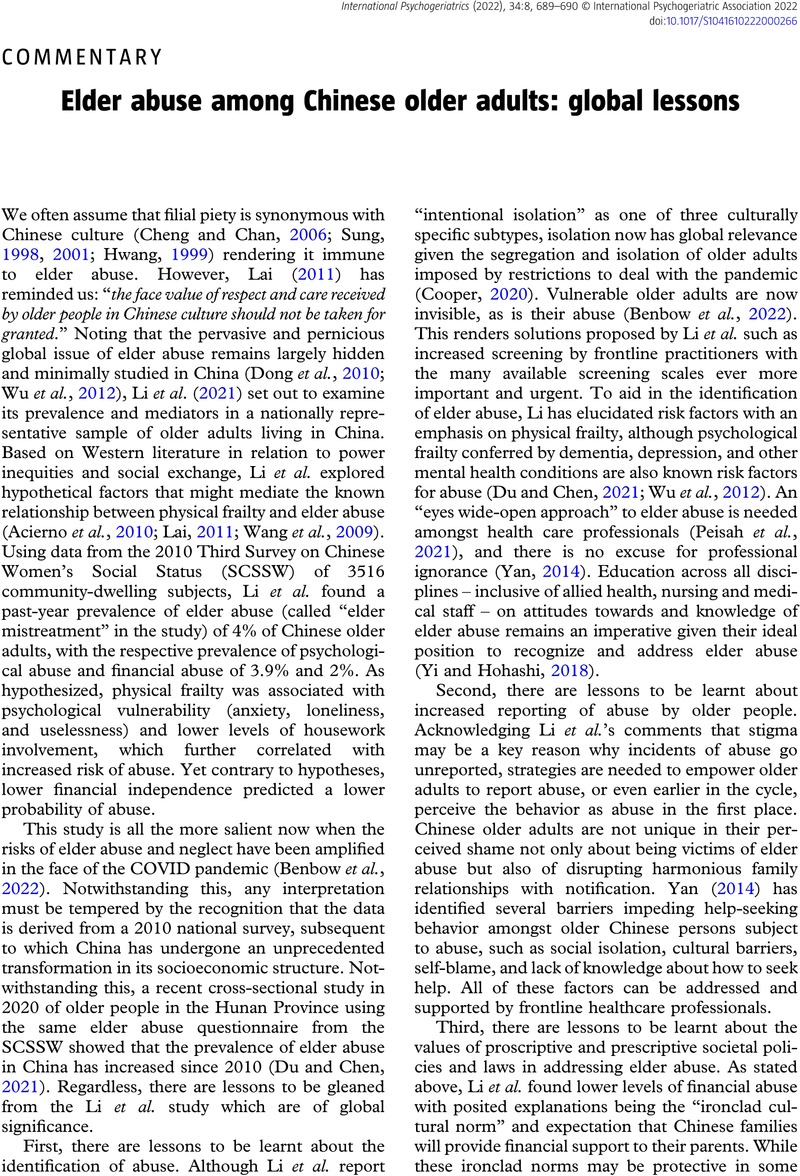Crossref Citations
This article has been cited by the following publications. This list is generated based on data provided by Crossref.
Fu, Yi-cheng
Pei, Min-yue
Liao, Jiao-jiao
Li, Nan
Zhang, Fu-chun
and
Liu, Hui-lin
2023.
Prevalence and correlates of elder neglect in the community-dwelling Chinese population: New evidence from the CLHLS study.
Frontiers in Public Health,
Vol. 11,
Issue. ,
Turner, Robin
Glue, Paul
and
Barak, Yoram
2024.
Effects of changing criteria on improving interRAI assessment for elder abuse: analysis of a national dataset from Aotearoa New Zealand.
BMJ Open,
Vol. 14,
Issue. 7,
p.
e081791.



